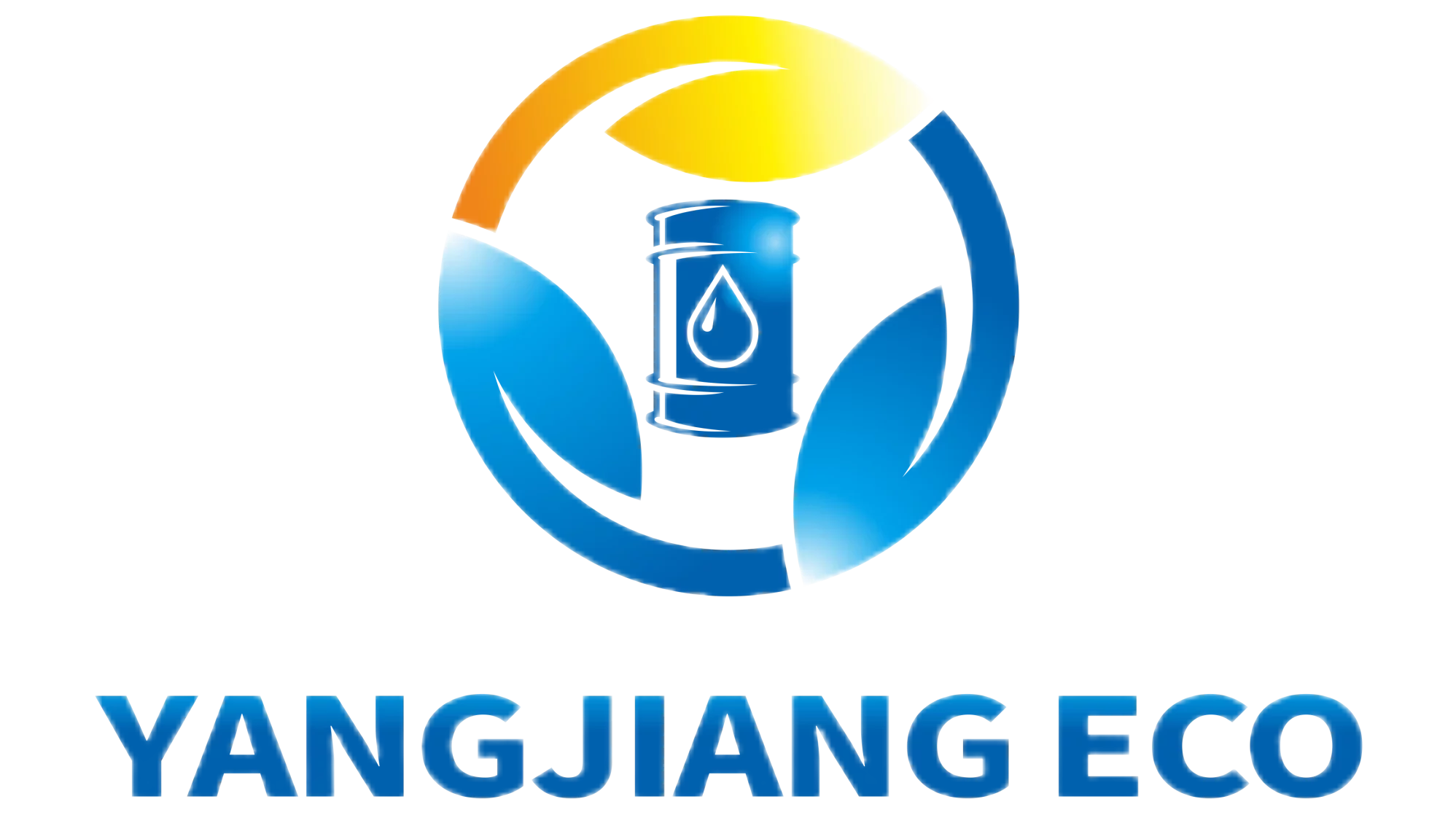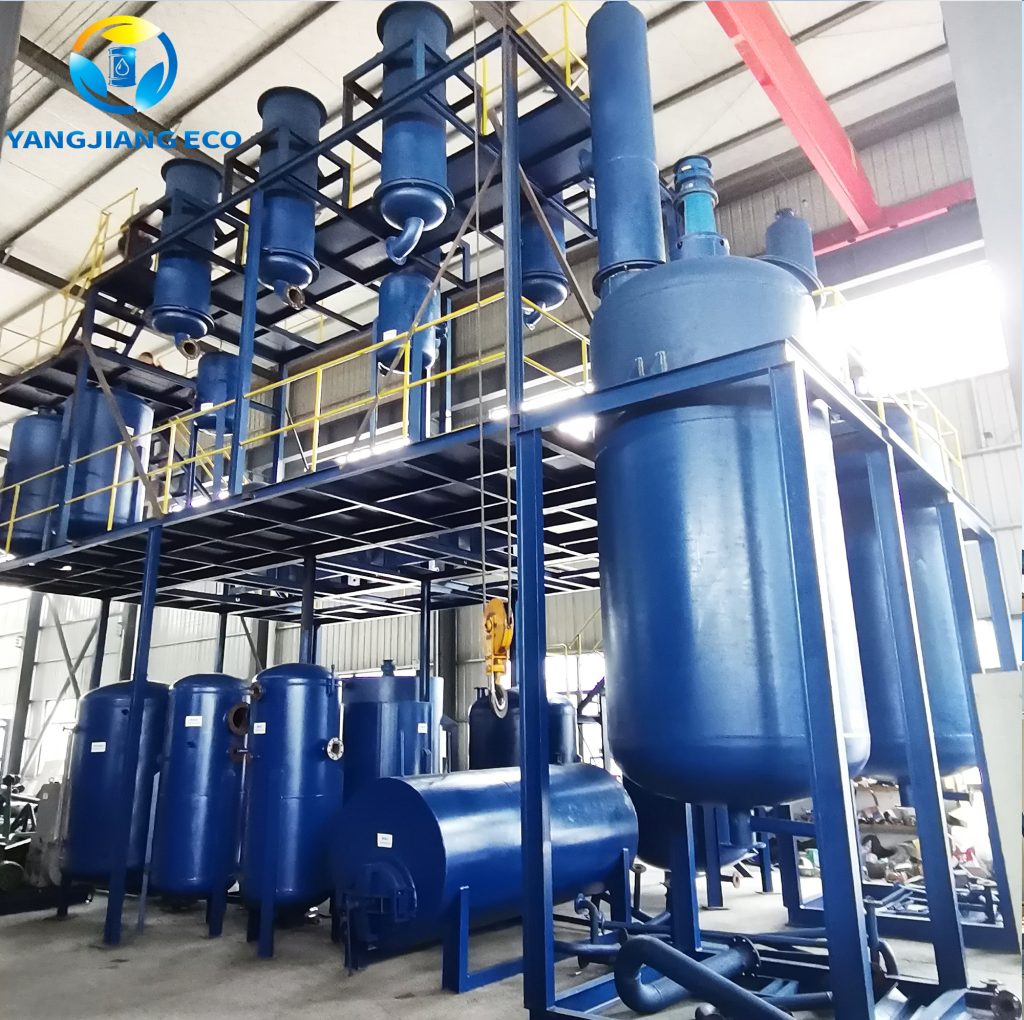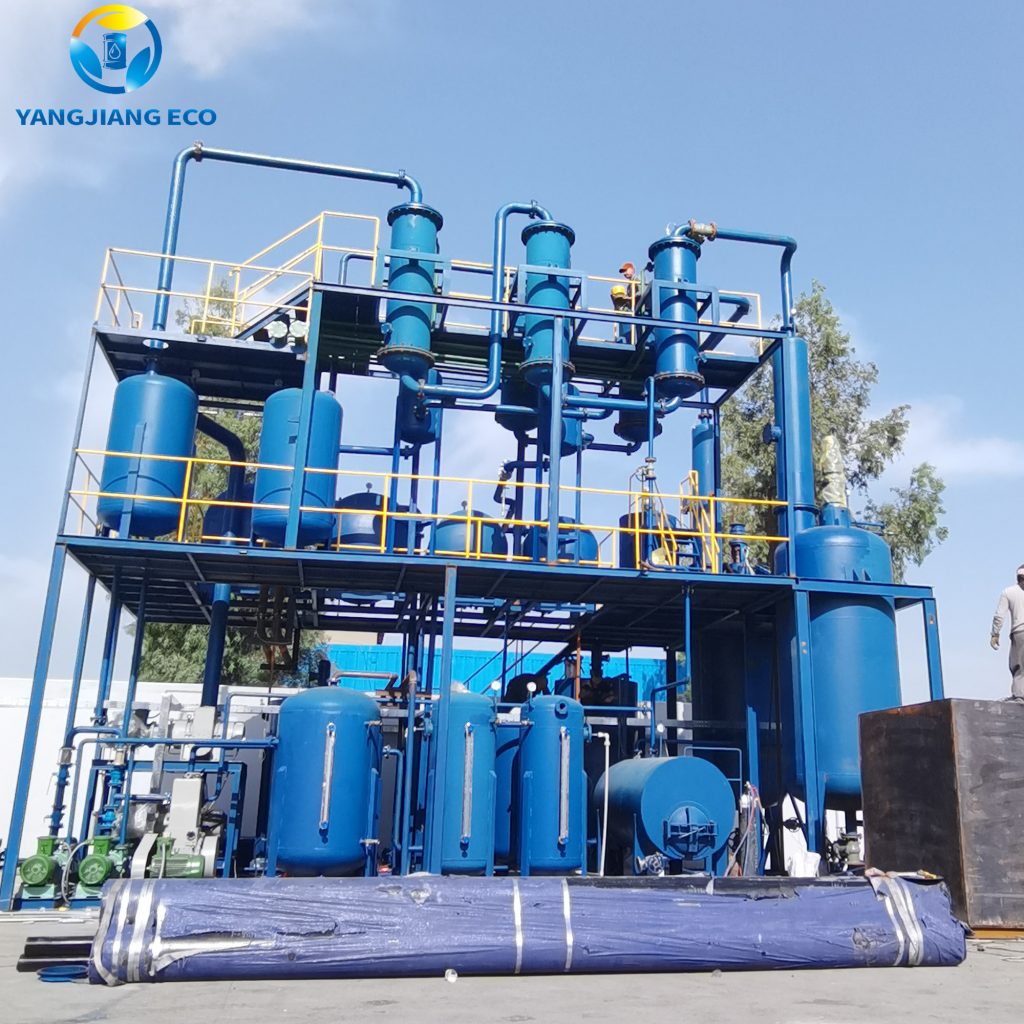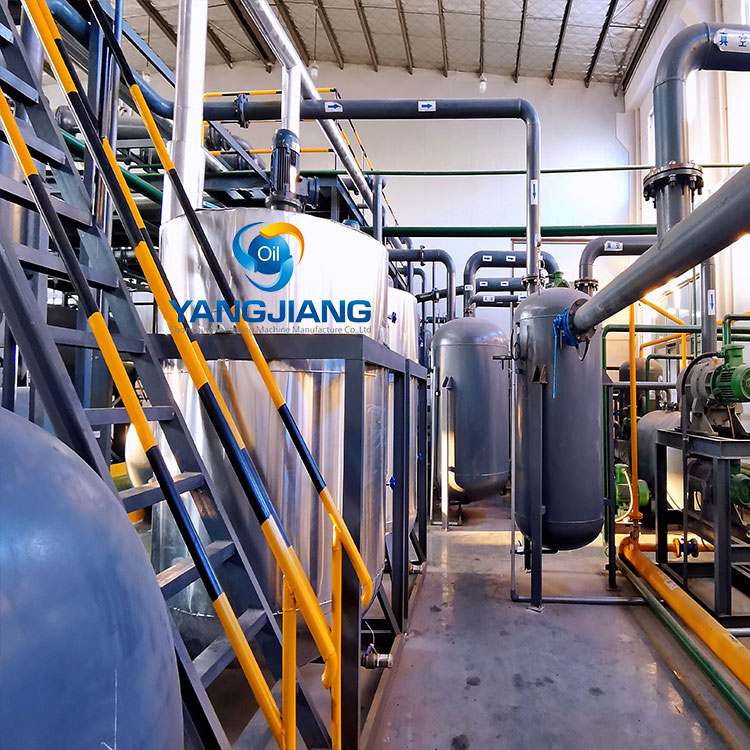In automotive and industrial use, large quantities of used lubricants and oils are generated every day. Improperly disposing of these oils can lead to serious water and land pollution, corrosion of equipment, and even failure to meet environmental regulations. That is why recycling used engine oil has become a compulsory element in sound manufacturing and maintenance practice.
By diligent collection, treatment, and refining processes, used engine oil can be recycled into usable base oil or fuel, creating environmental and economic benefits.
In this article, we’ll share practical insights on why waste engine oil recycling is important, how to carry it out safely step by step, what technologies are used, and how to choose a reliable partner for long-term success.
Why is Waste Engine Oil Recycling Important?
Beyond conservation of the environment, recycling waste engine oil is also a strategic input towards conservation of resources and industrial sustainability. Used lubricant contains between 75–80% of its base oil content when used, and thus, they are recoverable and reusable by re-refining them. To production and maintenance businesses, this is an important opportunity to reduce raw material costs and dependence on crude oil imported from abroad.
Through recycling waste engine oil, companies are not only mitigating hazardous wastes but contributing to a circular production system as well. Instead of considering used oil as disposable, it becomes part of an endless loop—collected, processed, and reconstituted into new lubricants or fuels. This action has a direct benefit to global sustainability goals and allows companies to comply with ESG standards more and more in demand by regulators and customers.
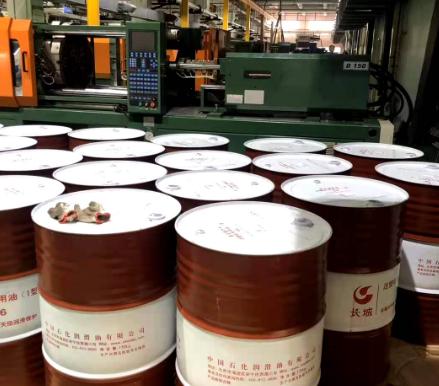
Technically, we have noted that high-quality recycled oil, when re-refined using new vacuum distillation and hydrotreating equipment, is equivalent in performance to virgin oil. This indicates that recycling is not merely a waste-disposal option—it is an industrial operation with cleaner production and profitability in the long run.
Lastly, the importance of waste engine oil recycling is that it serves as a bridge between environmental sustainability and economic benefit. It transforms a potential pollutant into a renewable resource, making industries remain competitive, compliant, and conscientious.
How to Safely Recycle Waste Engine Oil Step by Step?
Waste lubricant recycling entails more than collecting used oil — it entails a precise, controlled procedure to ensure safety and product quality. Our technicians have refined an efficient process over the years that many industrial customers use to recycle waste engine oil safely and within environmental and technical specifications.
1. Collection and Segregation
The first process of engine waste oil recycling is proper collection. Used oil should be drained into spill-proof, corrosion-resistant containers that are correctly labeled to avoid confusion with other wastes. It should not be mixed with coolant, brake fluid, or solvents since contamination may make the oil not recyclable. There should be specific collection areas with spill-proof floors and barriers for containment in collection facilities.
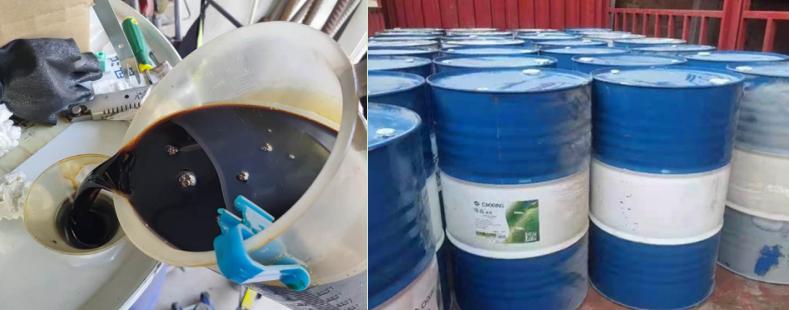
2. Storage and Pre-Treatment
Before processing, the oil that is collected will require stabilization. This involves removing the free water and excessive particulates by basic settling or pre-filtration. Temperature and humidity have to be controlled to prevent oxidation by operators. Proper handling practices—like the wearing of protective gear and anti-static wear—are important here.
3. Filtration and Dehydration
Advanced filtration eliminates carbon sludge, suspended metal, and solid impurities. Dehydration units strip water to improve the quality of the oil and protect downstream equipment. The cleaner the feedstock, the better the recycling process will function.
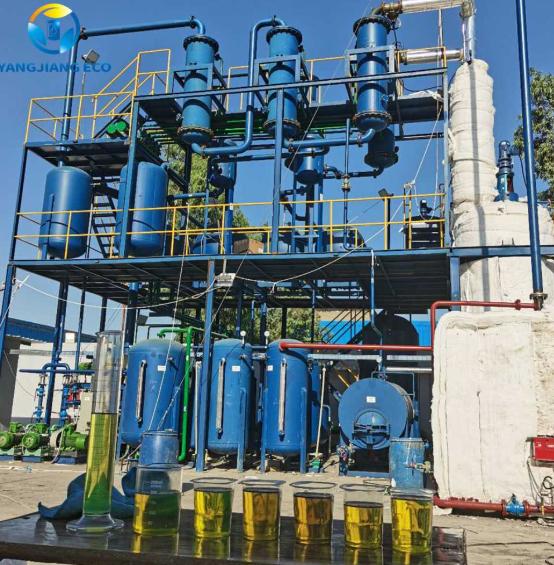
4. Re-Refining and Purification
It is here at the central point that the oil is vacuum distilled or is treated with other technologies in refining to separate light fuels, base oils, and residues. Depending on the design of the system, additional treatments such as clay polishing or hydrotreating may be utilized in an attempt to increase color, smell, and stability. Recycled oil can have performance comparable to virgin lubricants with contemporary systems.
- Quality Testing and Reuse
Having undergone re-refinement, each batch underwent quality checks for viscosity, flash point, and total acid number. If passed, the recycled product gets integrated into lubricants, hydraulic oils, and alternative industrial fuels.
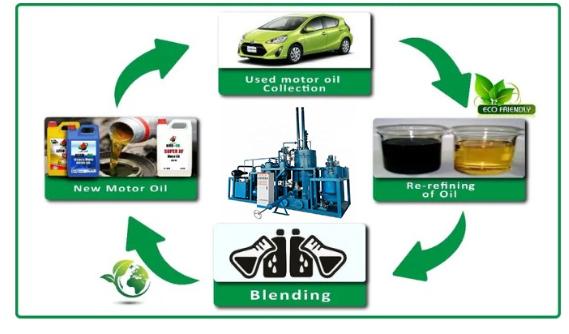
- Environmental and Safety Controls
During the entire recycling waste engine oil operation, the operational order is to keep the waste recycling line safe and efficient. Staff must adhere to the region’s standards for emissions, waste residues, and the movement of hazardous materials. Automated safety systems and closed-circuit designs of the line minimize the risk of spills and operational exposure.
These organizational system designs ensure the waste engine oil recycling practices adopted are safe, environmentally sound, and aligned with the best practices on the globe.
For more details about the process of waste engine oil recycling, please see our other blog:
Process and Technology of Used Engine Oil Recycling
Equipment and Technology Used to Recycle Waste Engine Oil
The profitability and environmental friendliness of recycling waste engine oil depend directly on the technology behind it. Modern recycling installations are far advanced from plain filtration, embracing sophisticated engineering solutions for high recovery, oil quality stability, and minimal environmental impact. From our experience in designing and manufacturing recycling equipment, the selection of the right technology is the foundation of a stable and profitable business.
Vacuum Distillation Units
Vacuum distillation is the major technology for industrial-scale recycling of waste engine oil. By reducing pressure in the distillation chamber, the oil’s boiling point is reduced, allowing light fuels, base oil, and residues to be separated without thermal degradation. This maintains the molecular integrity of the base oil and creates a higher yield of reusable product.
Hydrotreating or Clay Polishing Systems
To enhance the color and quality of the recycled oil, additional purification processes in terms of hydrotreating or clay polishing are used.
- Hydrotreating means the use of hydrogen under controlled pressure to remove sulfur, nitrogen, and unsaturated hydrocarbons to yield a clearer and more stable product.
- Clay Polishing, on the other hand, uses adsorption to strip carryover impurities and odors, promoting the final oil’s appearance and performance.
Membrane and Filtration Technologies
For pre-treatment and fine purification, membrane separation systems and filters of high precision are widely used. These systems effectively remove suspended solids, water, and trace metals before oil enters the distillation system. This provides cleaner feedstock, increasing efficiency and reducing maintenance.
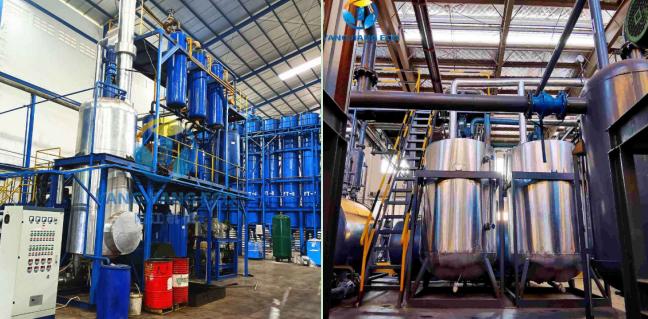
Dehydration and Degassing Units
Two major impurities affecting oil quality and process safety are water and volatile gases. Controlled heat and vacuum conditions in dehydration and degassing units eliminate these elements. In addition to increasing the quality of the recycled oil, this prevents foaming, oxidation, and corrosion in downstream units.
Automation and Control Systems
Advanced automation features like programmable logic controllers (PLCs), automated temperature and pressure controls, and real-time data monitoring are integrated into modern waste engine oil recycling equipment. Such and similar automation features and real-time controls ensure sustained equipment performance, provide safe operational environments, and permit operators to fine-tune control parameters for optimal recovery and energy efficiency.
Environmental Protection Components
Responsible recycling systems are designed with environmental compliance in mind. Gas scrubbers, condensers, and closed-loop cooling systems minimize emissions and energy consumption, helping operators meet international standards like ISO 14001 and EPA regulations.
Choosing a Reliable Partner to Recycle Waste Engine Oil: Build or Buy?
Within this business, the question inevitably comes along: “Should I do this myself?” Having guided many clients through making this choice, I can assure you that making a choice about how to recycle your waste engine oil is really a strategic choice of whether or not to invest in doing it yourself or hiring a specialist. Your decision will have long-term implications for your capital, operational costs, and regulatory compliance.
Option 1: Creating Your Own Waste Engine Oil Recycling Machine
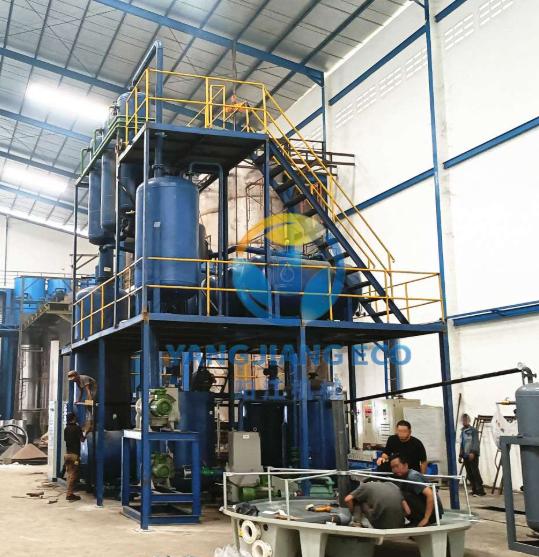
The idea of refining the oil in the factory is appealing. It is instantaneous control and the potential to capture all the value. I have witnessed workshops do this, and it’s a big undertaking.
- The Technology: Small plants tend to use a combination of a dehydration unit (typically a vacuum dryer) and thin-film evaporation equipment. This will boil off water, sediments, and lighter fuels and leave a clarified oil, typically used as the starting point for fuel oil or for further processing.
- The Reality Check: Yes, the underlying equipment can be purchased, but the real issues are in the details. You must factor in the huge space requirements, energy consumption, and need for technically trained individuals to operate and maintain the system. Most critically, the product of such small units is a regenerated oil, not a re-refined one. It is frequently not as good as virgin base oil and ends up stuck in fuel blending.
It only becomes worthwhile to invest in aircraft-sized equipment to refine waste engine oil if you make a very high, consistent amount and have the funds and expertise to manage an elaborate, highly regulated process. It will be too expensive for most businesses and impossible to produce a true high-value end product.
Option 2: Choosing a Professional Recycling Partner
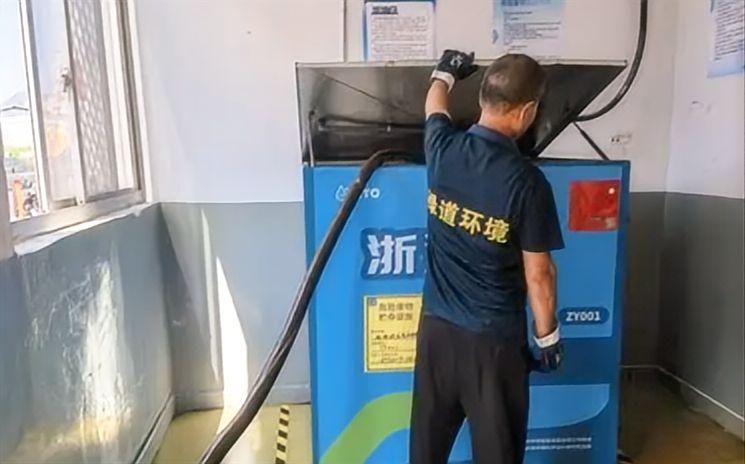
Over 90% of businesses have discovered that hiring a specialist is the smarter, more economical approach. It takes a complex operational headache and converts it into a simple, managed service. Here’s what to seek in a genuine partner:
- Licenses & Transparency: A reliable partner will not hesitate to provide their hazardous waste transport and processing licenses. They should not just respond to whether or not they recycle, but also to how. Do they re-refine with hydrotreating to produce a true Group II base oil? How open they are will measure how reliable they are.
- End-Product Quality: The actual gauge of a recycler’s worth is what the oil is being converted into. Partner with a firm whose end product is a high-quality, re-refined base oil that can re-enter the lubricant supply chain. This is definitive proof they are not simply “disposing” of your waste, but are indeed circular.
- Smooth Compliance: Your partner must facilitate compliance effortlessly. This means providing legally defensible documentation—such as thoroughly documented waste manifests and Certificates of Recycling—for every single shipment. This paperwork is your shield in case of an audit.
Unless you are an oil re-refining company, do what you’re best at and partner with someone who is best at what they do. A quality partner doesn’t take a waste product off your hands; they become a part of your operation as an extension of your own environmental, health, and safety department, making the journey to recycle waste engine oil efficient, compliant, and genuinely beneficial.
Final Thought
Successful waste engine oil recycling is a valuable practice that unites environmental responsibility with business efficiency. Through secure collection, treatment, and refining processes, businesses can recycle used oil into valuable resources with minimized waste and regulatory adherence. By having either an in-house program or partnering with a proven partner, an investment in tested technology and set processes ensures long-term achievement. Recycling waste engine oil responsibly maintains the environment while securing your bottom line.
Recommended Products
